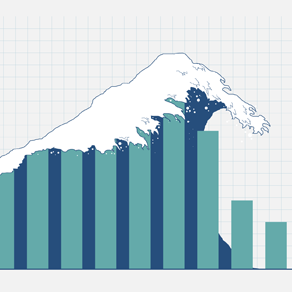Byte-ing Off Too Much? How Retail Can Combat the Data Overload
by Hugh Williams on 28th Aug 2018 in News


Take Domo’s latest Data Never Sleeps report. It revealed that we’re on the cusp of a data overload in our society – over 159 million emails and 12 million texts are sent every single minute, while the internet receives over three million gigabytes of web traffic. What’s more, we’re divorcing the high street and eloping with online shopping, spending over £8m online every 60 seconds.
The numbers are vast; and it’s widely acknowledged that our current ‘information age’ is starting to cause major mental health issues for the population. Social media rehab centres have been increasing in popularity for several years, while measures are constantly being invented to both encourage or combat online browsing.
Arguably, the same can now be said for the business world. There are countless platforms, communication channels, apps, devices, and more, that deliver an almost constant stream of notifications. And almost every function of a company can now be quantified into databases or analytics, offering businesses a magnifying glass into the habits or demands of their customers and operations.
Making sense of it all is a challenge; and with so many insights to decipher, senior staff are evaluating their decision making like never before. Earlier this year, Gartner found that 52% of marketing teams spend most of their time managing, integrating, and formatting ‘messy data’. If we’re constantly navigating numbers, where do years of experience or gut feelings fit in? Have we reached what one Johnson & Johnson exec referred to as 'infobesity'?
Not quite yet it seems, as digital strategies from the supermarket giants would suggest otherwise. One of IoT’s earliest retail adopters, Tesco, has used brand partnerships, data manipulation, and analytics to monitor customer behaviour. Cutting-edge technology use has seen the company hold its place as one of the big four grocery retailers – and one of the fastest growing to date.
Then there’s the merger between Sainsbury’s and Asda, a perfect opportunity for both companies to access customer information on a much larger scale. Owing to GDPR regulations, each will need to seek consent from their new audiences before analysing information about their browsing habits. But, managed well, this will unlock a wealth of opportunity to better understand their target markets.
Beyond the grocery counter, online retail giants like Amazon are utilising big data to speed up the customer service process, bolstering customer engagement and satisfaction. It’s now easier than ever to message clothing brands on Facebook; and if you ring a customer service helpline, it’s rare that your call won’t be recorded to improve customer experience.
Of course, all of these big companies have equally big budgets, but they demonstrate that harnessing the right information and insight is what matters. In the increasingly overloaded data landscape, the key is to understand the data points required and prioritise the tools that will bring them to you.
It’s easier than ever to build transparency across the workforce, too. Data visualisation tools can provide granular details of consumer demographics and interests, eliminating the need for time-consuming, and often costly, customer surveys or cold-calling for feedback. Instead, teams can integrate and interpret links between sales and performance, creating a far more digestible and understandable business forecast for staff members at all levels.
Data, as we know it, creates access to what is a relatively brave new world. In years gone by, the task of noticing data patterns across departments was left to IT, or a specialist with a demonstrated technical history. Now, the leading businesses in any sector understand the true value of data, and make space for data departments and hire CDOs to bolster their competitive advantage.
It’s evolved as advancements in cybersecurity and business intelligence tools have allowed us to essentially give data its own identity. With the right technologies in place, companies are able to legitimise spending or a culture change through numbers that are tangible. And retailers can connect the dots between sales revenue and age groups or expenditure, allocating stock levels and budget accurately.
That’s why, in today’s business environment, companies harnessing real-time data and artificial intelligence are taking control of the market. Getting it right can be the difference between customer interest or indifference, and over-target versus overload.




Follow Fast Growth Brands